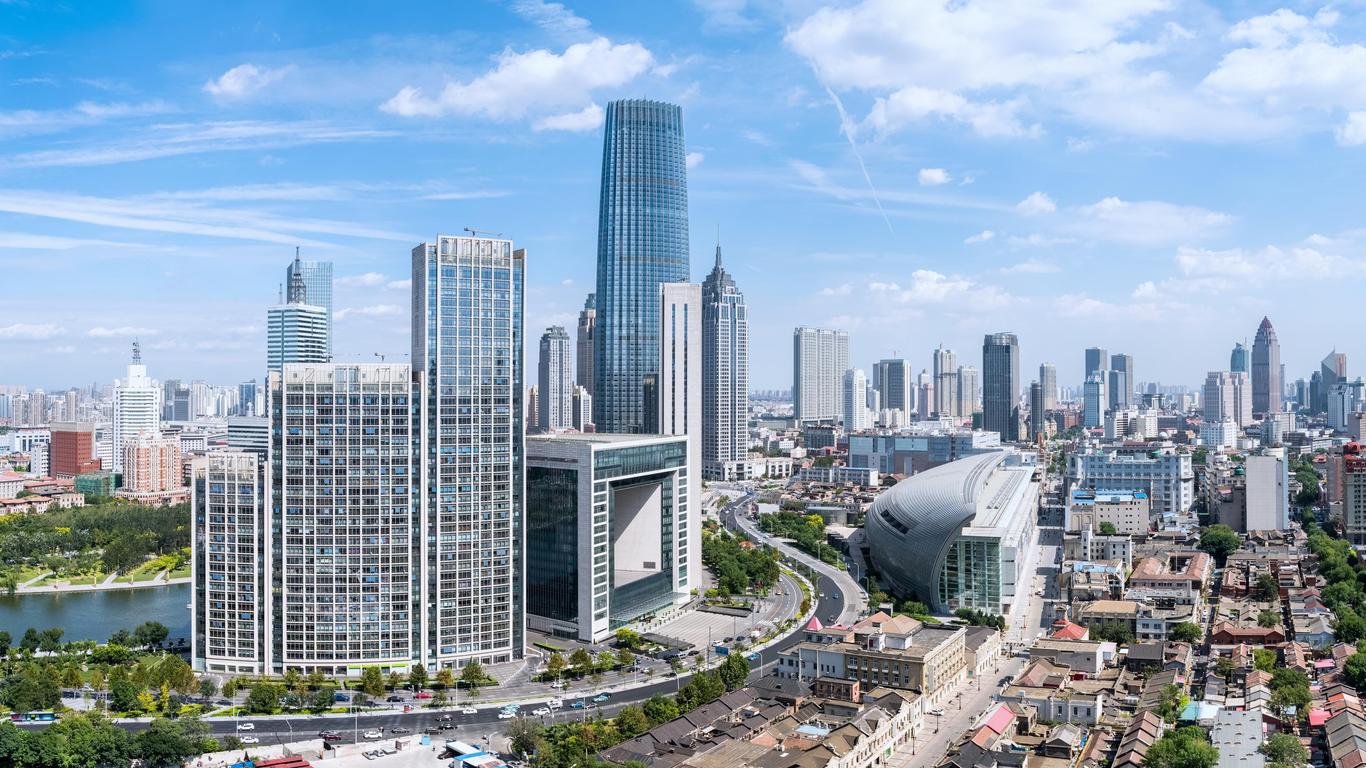A major port in northeastern China, Tianjin’s modern skyscrapers stand juxtaposed against the 19th century European-styled houses along the Five Great Avenues. While its walled city dates back to 1404, it was in the mid-19th century that Tianjin emerged as a major seaport and gateway to Beijing, with many Western nations establishing concessions here.
The Five Great Avenues are found on the southern side of the city, marked by a combination of Renaissance, ancient Greek, Gothic and Romantic-style architecture, as well as a scattering of traditional Qing dynasty structures. French-styled chateaus, red-tiled Bavarian villas and British mansions stand in stark contrast to the high-rises which surround the area, and it was from here that European powers conducted their trade and sold opium. The Hai River runs through the heart of the city and provides some of the best views across the old town from its banks, while the large Ferris wheel of the Tianjin Eye spans its waters, acting as both a bridge and sightseeing attraction. Jinmen Guli, or Ancient Cultural Street, lies within the Nankai District and is renowned for its antiques, traditional handicrafts and jade items, and lined with Qing Dynasty architecture and the Temple of the Queen of Heaven. Tianjin is also home to one of the world’s tallest TV towers, located in Tianta Lake, with views from its restaurant at 248 metres that are unmatched.
Tianjin is connected with Beijing via a bullet train from the Tianjin Railway Station, while shuttle buses transport visitors from the Tianjin Airport into the city centre. The city’s efficient public transport network consists of buses and a metro system which access all corners, as well as plenty of taxis available in most areas.
It was following the Grand Canal’s opening during the Sui dynasty that Tianjin was first established as a centre of trade, before expanding under the Qing dynasty. The Treaties of Tianjin were signed in 1858 and ratified by the Emperor of China two years later, opening the port up to foreign trade and resulting in the European architectural legacy seen in its villas, churches, barracks and schools today.





